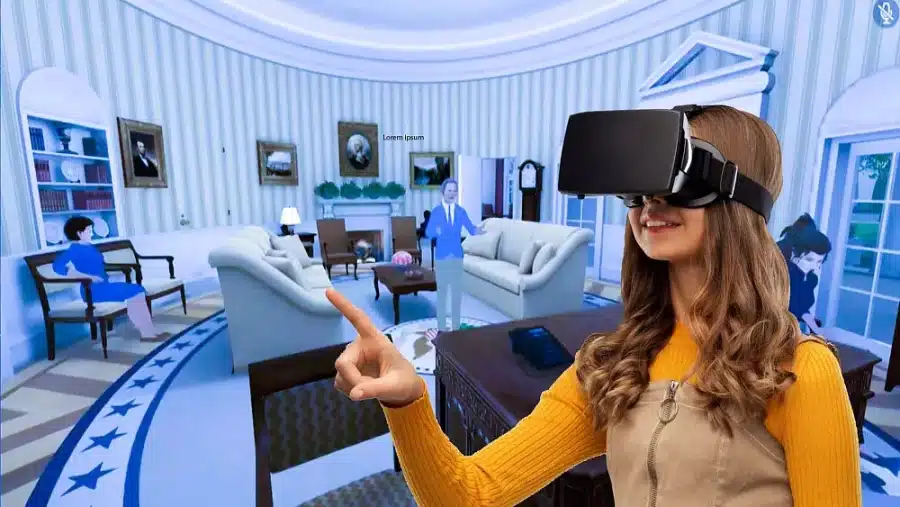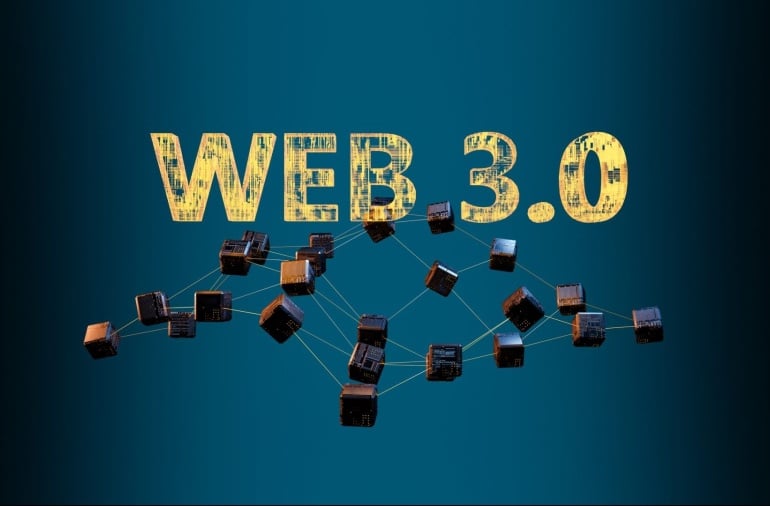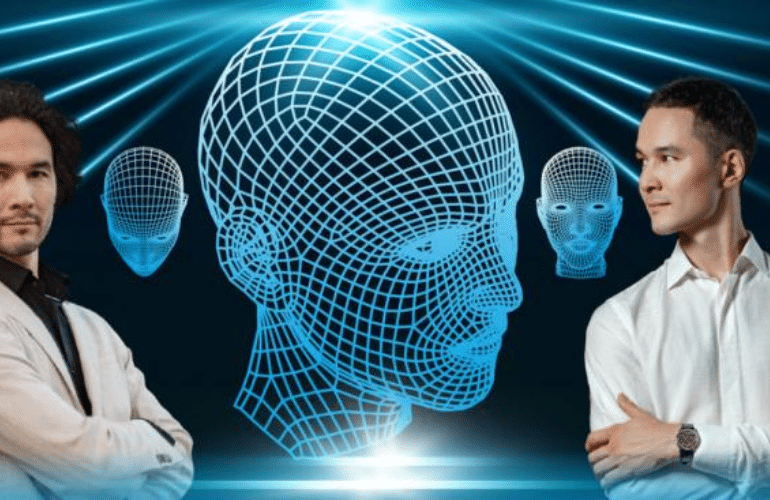After its debut in late 2021, the Metaverse has been causing a stir as a new disruptor of employment. Some users have embraced the Metaverse, while others have criticised it, offering a new way to interact within the same global network.
According to Bill Gates, most business meetings may be held in the Metaverse within two to three years. Still, cultural institutions like Sundance Film Festival have already begun hosting events there (or plan to do so).
How does education fit in in virtual or mixed reality?
These educational tools have some advantages, as well as some dangers, and here are some of our thoughts on them.
What is the Metaverse?
A digital environment called the metaverse allows participants to create virtual worlds. Compared to other platforms, it will enable users from all over the world to connect in a more human way.
The metaverse is an excellent way to connect digitally with people all around the world. Anyone can access and interact with virtual areas using a web browser or virtual reality headset.
Users and developers can create anything from metaverse schools to virtual sports stadiums on their own real estate by personalising the metaverse as a computer-generated copy of the real world.
As the result of pandemics and other tragedies, the world has become geographically divided; this is where the metaverse is creating new opportunities for families and friends to interact.
Metaverse opportunities for education
By wearing virtual reality headsets, teachers and students can connect no matter where they are in the real world. An individual who seeks out such functionality will be able to benefit from enhanced educational opportunities.
One can imagine countless possibilities in a persistent another world, with education perhaps being particularly impacted. For example, imagine a classroom in which virtual reality is used.
Imagine a classroom full of curious students. In order to broaden their understanding of historical periods, their instructor travels to new places frequently.
Teaching and learning in the metaverse
A virtual environment can be created according to the lesson plans of teachers instead of students reading from books.
There may be instances in which similar scenarios can already be found in our actual environment, despite the fact that the idea of teaching and learning in the metaverse seems only to exist in our imaginations.
To illustrate, let’s take a look at the game Roblox. Similar to Minecraft and Fortnite, Roblox allows users to create their own virtual worlds. As of now, Roblox schools have been added to the concept of creating a world, which was initially applied to user creation.
Teachers can set up Roblox classrooms in either a real-world or virtual environment, with private servers that they can access with their students. For example, children might connect to the same virtual environment with their instructor during a computer lab class.
An instructor may use a computer display to display a virtual historical site, but students and teachers will interact in reality.
Virtual learning experiences available on Roblox best illustrate the educational potential of metaverses. With virtual learning experiences, students take part in millions of user-generated environments using their devices at home rather than in a classroom.
There are also role-playing simulations of historical events that may be played. Students are taught about physics in a secure virtual environment through these worlds based on physics simulations. A new type of learning through lived experiences can be gained through such events as opposed to merely reading about topics in a book.
A metaverse learning setting shares the benefit of allowing anyone to connect in from anywhere to a virtual learning environment. It is here where metaverse worlds diverge from Roblox, as they are far more immersive.
Benefits of metaverse learning environments
In the classroom, using virtual reality can provide students with several advantages over conventional methods, allowing them to see historical sites or perform risky experiments in a safe environment.
A number of significant areas of the metaverse are not covered by Roblox and other games that provide virtual online learning experiences.
There are a number of advantages to metaverse settings being unrestricted by graphical design. For example, in Roblox, Minecraft, and Fortnite, cartoonish graphics can distract students from studying and remind them that they are playing one of their favourite games.
There is, however, a possibility of creating a metaverse that seems quite authentic. Students will be able to create a beautiful and enthralling metaverse depending on what metaverse they choose.
Furthermore, metaverse settings might mimic real-world settings, adding to the immersion experience. The physical connection can be established in metaverse environments and complete immersion in a virtual world. For example, it may appear that the student’s hands and fingers are simulated when they wear virtual reality headsets and controllers.
Because of this, teachers may use subtle hand movements as a teaching tool, such as teaching students writing or demonstrating sign language. As soon as they leave the virtual environment and return to the actual one, their muscle memory will be in place, so it won’t be difficult for them to repeat their learning experiences.
As well as encouraging safety, metaverse learning environments may hold an advantage over traditional classrooms. Teachers will be able to control their students’ interactions in the metaverse by simply altering specific permissions within the virtual environment and will be able to prevent bullying or segregating children for disciplinary reasons.
In addition, having bullies or other distractions off campus makes it possible for children to concentrate on studying instead of worrying about themselves. School shootings can also be prevented by dispersing children into their homes rather than gathering them in one location.
Enhancing Immersive Learning
Through AR and VR
The primary technologies that support the metaverse (VR) are Augmented Reality (AR) and Virtual Reality (VR). The simulated environment is provided to users through headgear and/or goggles.
The benefits of immersive education include being able to apply theory to immersive settings, retaining knowledge effectively, and increasing engagement among online learners.
Virtual reality and augmented reality allow learners to interact with simulations and activities as if they were there in person; 3D drawings, for example, can help children understand how the equipment works or what a mathematical notion might look like.
Through Gamification
The benefits of gamified learning include making learning easier and more enjoyable, improving problem-solving abilities, providing real-time feedback, and making learning more enjoyable. In addition, technology will soon influence our lives in other ways.
There has been a faster and more effective exploration of the potential of the game industry. In addition, E-learning will be significantly increased through the metaverse, enhancing virtual learning settings and making learning more engaging and immersive.
The advancements and changes we will see in the future will be exciting, even though we can only speculate.
Disadvantages of metaverse learning environments
Taking into account the drawbacks of metaverse education and how it can benefit students and teachers illustrates the advantages of metaverse education over conventional education.
Virtual reality classes seem like a great idea on paper, but they also come with some drawbacks. It would be challenging to obtain specialised accommodations for children with disabilities like hearing loss or visual impairments, for instance. Moreover, Chinese students who are deaf and want to take a metaverse lesson offered by their school are highly unlikely to be accommodated by American schools.
In this situation, the school is not able to cater to a child’s special needs. It is unfortunate that most schools do not provide accommodations for disabled students.
These findings indicate that metaverse addiction is a real threat, not only for kids but also for adults. Students may neglect their real-world responsibilities if they use their virtual reality headsets for educational and recreational purposes. It may not be easy to strike a balance between spending more time in a virtual environment and reality.
Last but not least, there is the issue of accessibility. For metaverse education to flourish and spread, it must be easier for families worldwide to purchase virtual reality headsets. This type of education will only be available to a small number of people if this does not happen.
***





